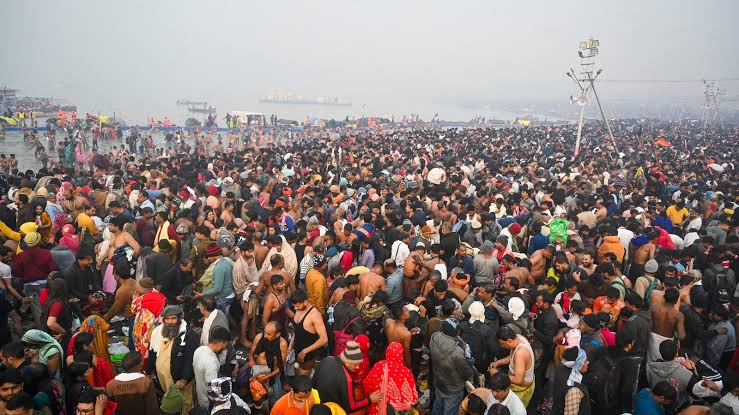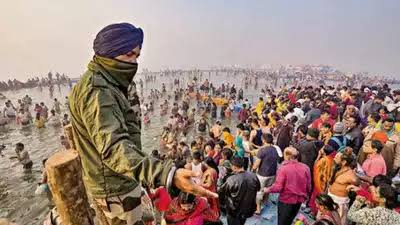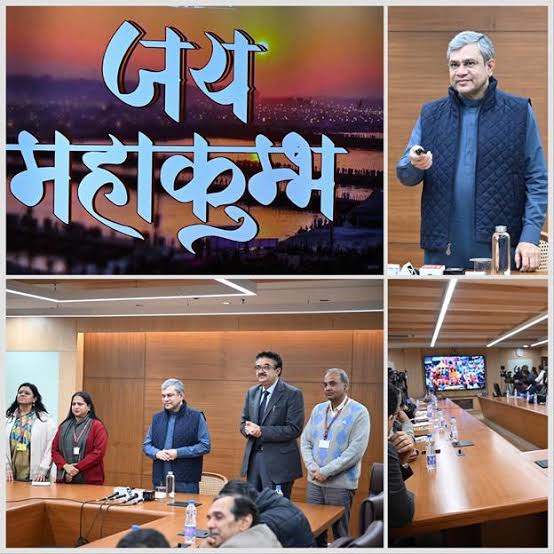The Maha Kumbh Mela in Prayagraj witnessed its third grand ‘Amrit Snan’ on the auspicious occasion of Basant Panchami, as thousands of sadhus and devotees took a sacred dip in the holy waters. This event, deeply significant in Hindu tradition, unfolded under intense vigilance following a tragic stampede on the previous bathing day that claimed at least 30 lives and left many others injured. Authorities, determined to prevent any further mishaps, implemented strict crowd management measures, ensuring a structured and orderly bathing sequence.
 The ritual began in the early hours, with each akhara following a designated schedule to take their dip. The Mahanirvani and Atal Akharas commenced the process at 4 AM, earlier than usual, to avoid congestion. The Uttar Pradesh government had bolstered security, deploying additional personnel, medical teams, and logistical support to manage the massive gathering. Chief Minister Yogi Adityanath had personally overseen preparations, emphasizing a “zero-error” approach to ensure the safety of all participants.
The ritual began in the early hours, with each akhara following a designated schedule to take their dip. The Mahanirvani and Atal Akharas commenced the process at 4 AM, earlier than usual, to avoid congestion. The Uttar Pradesh government had bolstered security, deploying additional personnel, medical teams, and logistical support to manage the massive gathering. Chief Minister Yogi Adityanath had personally overseen preparations, emphasizing a “zero-error” approach to ensure the safety of all participants.
Sadhus from different akharas arrived in grand royal processions, carrying the spiritual fervor that defines the Maha Kumbh. The sight of ash-smeared Naga sadhus, Mahamandleshwars, and devotees marching towards the Sangam at dawn was both mesmerizing and deeply symbolic. The processions followed a strict schedule, with each akhara allotted 40 minutes at the sacred waters before making way for the next group.
The tragedy of the previous Amrit Snan on Mauni Amavasya cast a solemn shadow over the celebrations. Authorities and spiritual leaders urged devotees not to crowd at the Sangam Nose—the primary confluence point of the Ganga, Yamuna, and the mythical Saraswati—reminding them that all ghats hold equal religious significance. Despite these reassurances, the devotion of millions remained undeterred, with pilgrims believing that the holy dip would bring spiritual purification and divine blessings.
By 4 AM, nearly 16.58 lakh devotees had already performed the ritual, contributing to the staggering total of over 34.97 crore pilgrims who had taken the sacred dip since the Mela began. The Uttar Pradesh government anticipated a footfall of five crore pilgrims on Basant Panchami alone, further underscoring the immense scale of this spiritual gathering.
As per tradition, the bathing sequence followed a structured order, beginning with the Sanyasi sect, followed by the Bairagi and Udaseen sects. The akharas, including the Shri Panchdashnam Juna Akhara, Shri Panchayati Niranjani Akhara, and Shri Panchayati Nirmohi Ani Akhara, adhered to the timetable, ensuring a smooth flow of devotees to and from the ghats.
The Maha Kumbh is not just a religious gathering; it is a testament to faith, resilience, and the deeply rooted spiritual traditions of India. While the recent tragedy remains a painful memory, the collective determination of devotees and authorities to uphold the sanctity of this festival has been unwavering. As the holy waters of the Sangam continue to welcome millions, the spirit of Maha Kumbh endures, unshaken by adversity and strengthened by devotion.




